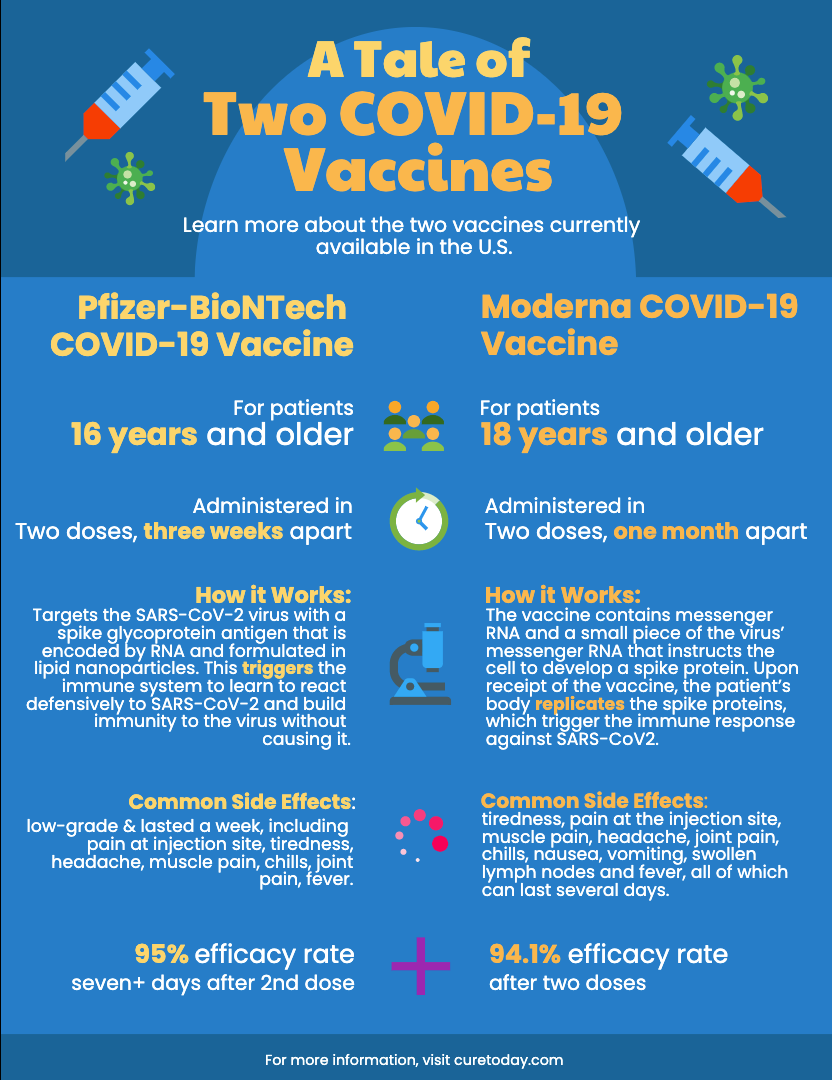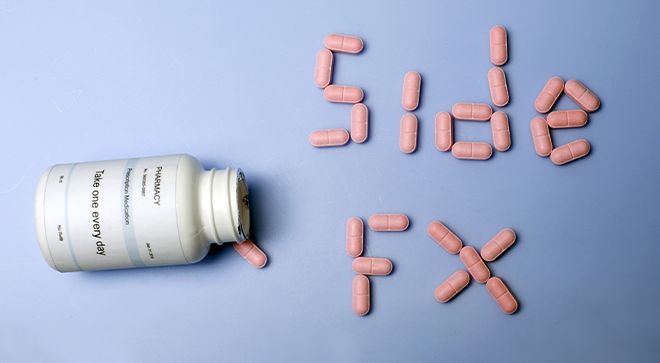Article
Sizing Up the COVID-19 Vaccines: What Patients with Cancer Should Know
Author(s):
With two different COVID-19 vaccines out there, it's important for patients with cancer to understand the different side effects for both. We help break down what patients and survivors can possibly expect.
In late 2020, the Food and Drug Administration (FDA) granted emergency use authorizations for two COVID-19 vaccines in the U.S.: one from Pfizer-BioNTech and another from Moderna. With two options currently available, patients with cancer may have a choice to make about whether or not to receive the vaccine – and questions about how it may affect their treatment.
CURE® recently spoke with experts from Duke University School of Medicine and The University of Texas MD Anderson Cancer Center about what patients need to know about each vaccine, taking into consideration their unique needs given their past or current treatment plans. Ultimately, as many doctors have noted, most patients receiving cancer treatment can rest easy knowing that both formulations should not affect most treatments, but they are encouraged to talk about their options with their doctor.
Here, we’ve created the following infographic to break down the differences between the two vaccines and help patients learn about what each option could offer them.

A Tale of Two COVID-19 Vaccines
Learn more about the two COVID-19 vaccines currently available in the U.S.
Pfizer-BioNTech COVID-19 Vaccine (BNT162b2)
- For use in patients 16 years and older.
- Administered in two doses, three weeks apart.
- How it works: Targets the SARS-CoV-2 virus with a spike glycoprotein antigen that is encoded by RNA and formulated in lipid nanoparticles. This triggers the immune system to learn to react defensively to SARS-CoV-2 and build immunity to the virus without causing it.
- Common low-grade side effects, that lasted a week, include: pain at the injection site, tiredness, headache, muscle pain, chills, joint pain and fever.
- 95% efficacy rate of preventing COVID-19 seven or more days after the second dose.
Moderna COVID-19 Vaccine
- For use in patients 18 years and older.
- Administered in two doses, one month apart.
- How it Works: The vaccine contains messenger RNA and a small piece of the virus’ messenger RNA that instructs the cell to develop a spike protein. Upon receipt of the vaccine, the patient’s body replicates the spike proteins that instead trigger the immune system to defend against SARS-CoV2.
- Common side effects include: tiredness, pain at the injection site, muscle pain, headache, joint pain, chills, nausea and vomiting, swollen lymph nodes and fever, all of which can last several days.
- 94.1% efficacy rate of preventing COVID-19 after two doses




